
2 Key Rules to Follow to Ensure Stretching Doesn't Make Your Back Pain Worse
What needs to be done to make sure stretching doesn't make your back pain worse.
- Listen to your body
- Don't hold, pulse
When you listen to your body, you let your body guide the moment. What I tell my clients is that stretching should always make you feel better. It may hurt so good or feel stiff but that's a part of the process. If you have residual soreness for longer than a few minutes you did too much too fast.
The other caveat that I tell my patients is that stretching is often better when you pulse and not hold. The pulsing allows you to gain more range of motion and flexibility without the discomfort or your body guarding.
You an apply the principles to the back stretches below.
Is Stretching Your Back Making Your Pain Worse? Learn When Stretches Make the Spine's Condition Worse
The Risks of Aggravating Your Low Back Condition
Is stretching my lower back bad?
The short answer is no! Stretching not only lengthens your muscle but it also moves your joints through ranges they are built to move through. However, there are two main reasons why your back may hurt after stretching.
- You went too far too fast. The key with stretching your lower back is to listen to your body. When you stretch, you want go right up to the point of feeling the stretch but no further. More isn’t better. When I work with my patients on stretching, I always let them know that they are in charge. I can only tell them where they may feel the stretch, but not how intense the stretch in their back muscles should feel. I have never had a stretch make someone worse for that reason. We need to use what you feel as a guide as we learn how to move your body. Stretching and mobility exercises are important. What is great is that they usually only take a couple minutes to complete. It feels so good to stretch your lower back, but learning how is important. Check out a past video on stretching!
- The intent of the stretch doesn’t match what is actually happening. This is important! There is a lot of information out there (and it can be easy to have the best intentions) but the execution may be off. I always recommend learning how to move your body correctly. You can do this by consulting a professional such as a physical therapist, personal trainer, or chiropractor. I recommend someone who has spent time moving their body to learn from. They may even be able to come to your home!
What’s the best way to stretch your lower back?
How do you safely stretch your tight or stiff lower back? Here are my top 3 safe stretches for lower back pain and stiffness.
- Standing Prayer Stretch
- Quadruped Rotation
- Prayer stretch with posterior pelvic tilt
Disclaimer. You need to make sure you are okay to exercise and move your body.
Standing Prayer Stretch
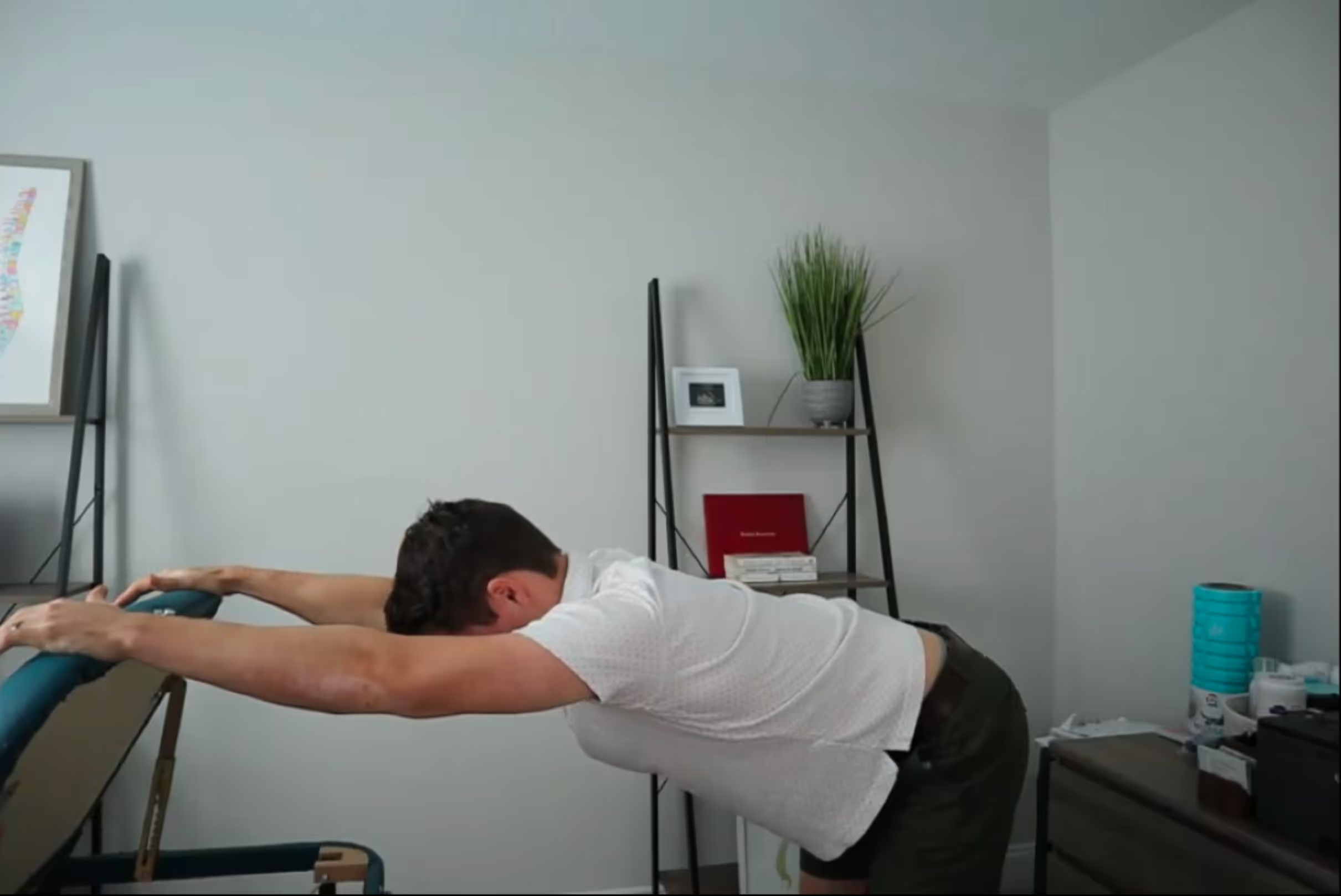
This is probably my favorite most effective upper back and lower back stretch since it can be done anywhere and you don’t have to get on the ground! It works into the stiffness but allows you to control how much you feel it! It stretches so much in your back.
1. Stand at your counter or next to something tall and sturdy.
2. Put your arms on the stable surface and step backwards allowing you to bend over with your head between your arms. Try to poke your butt out.
3. Slightly bend your knees and sink you chest and head between your arms.
4. You should feel this in your upper back and lower back. You may also feel this stretch in the back of your legs. Really everything is fair game if you are really stiff! Personally I feel it in my upper back, side of my arms, and sometimes in the back of my legs when I do this stretch.
A good place to start would be 5 for a 10-15 second hold.
Quadruped Rotation with Thread the Needle
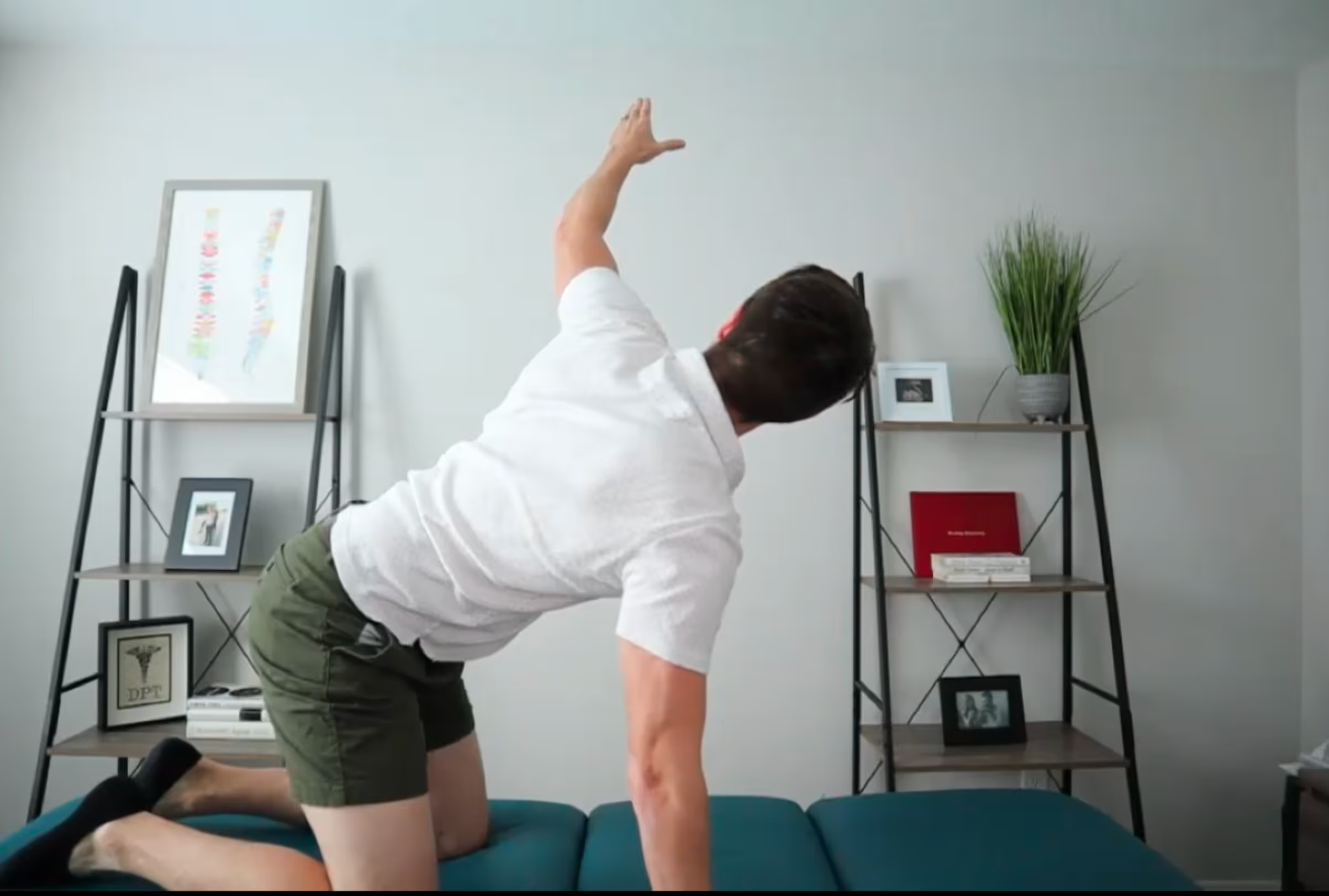
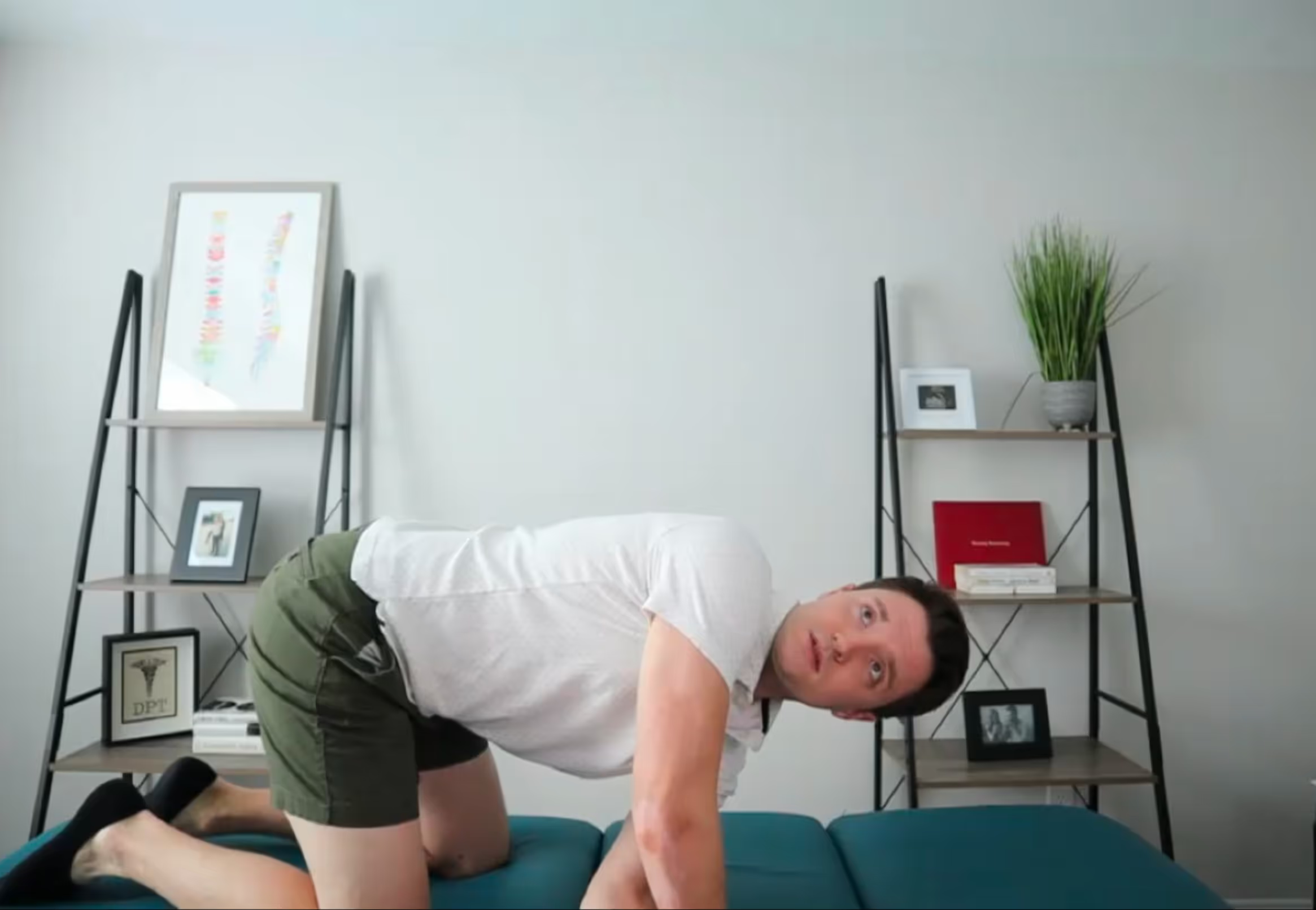
This is done on your hands and knees. If you can’t put pressure on your knees try a pillow under them. If that still doesn’t work then don’t worry about it. Don’t force your body to do something.
1. On your hands and knees with your knees under your hips and hands under your shoulders. Then lift one arm and rotate towards the sky turning your head while you are rotating. You will feel this in your upper back and you will feel that your stabilizing arm is working.
2. Further isn’t better. Just work into your back stiffness and then come back down. As you come back down make sure you are controlled.
3. On your way down reach underneath the other arm towards the other direction. You should feel this in your upper back. Don’t let the stabilizing arm bend as you do this.
Tip: When you get to the top, breath out. You will feel more of the stretch.
Try 5 or so on each side
Prayer Stretch or Child’s Pose with Posterior Pelvic Tilt
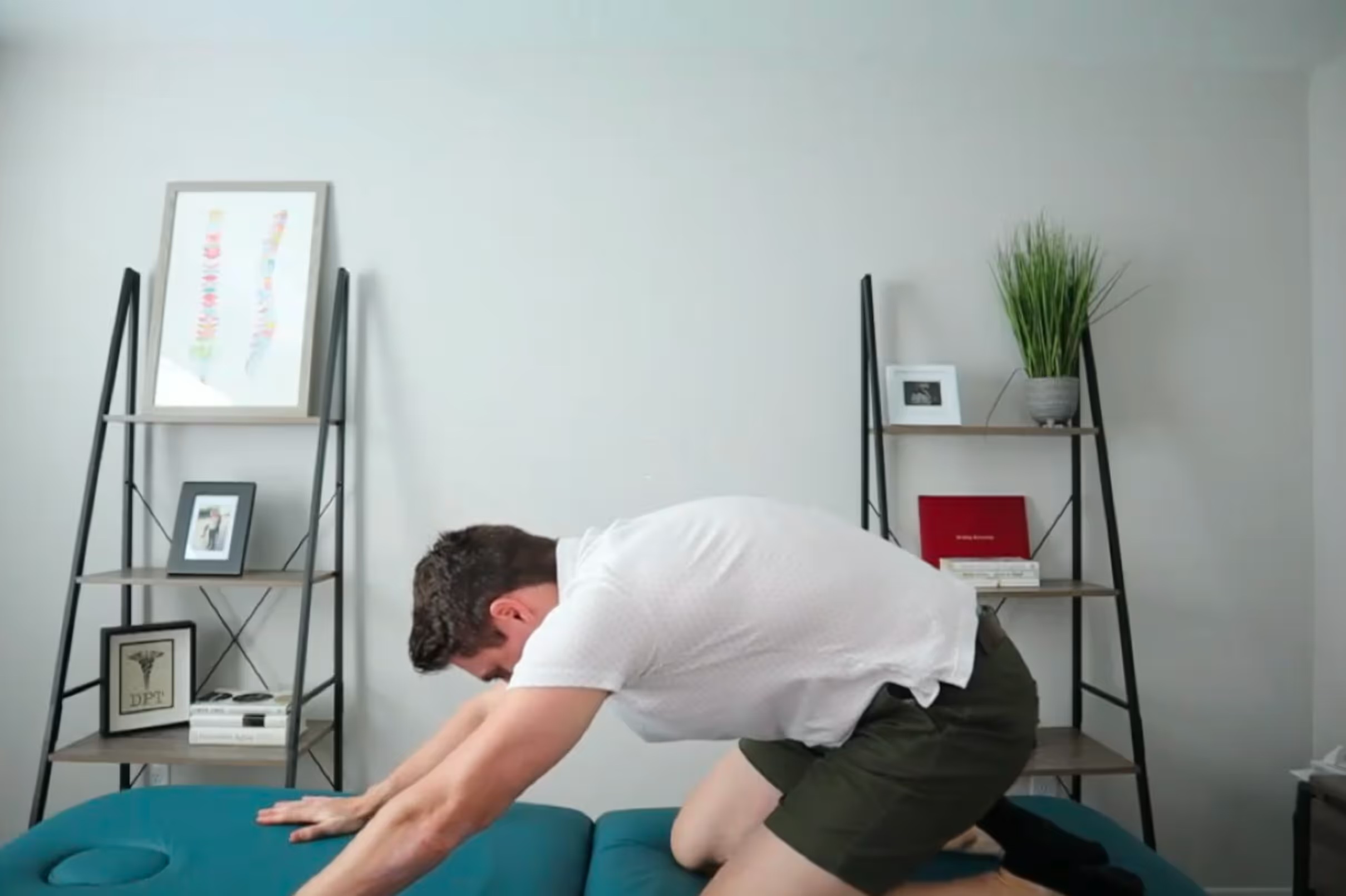
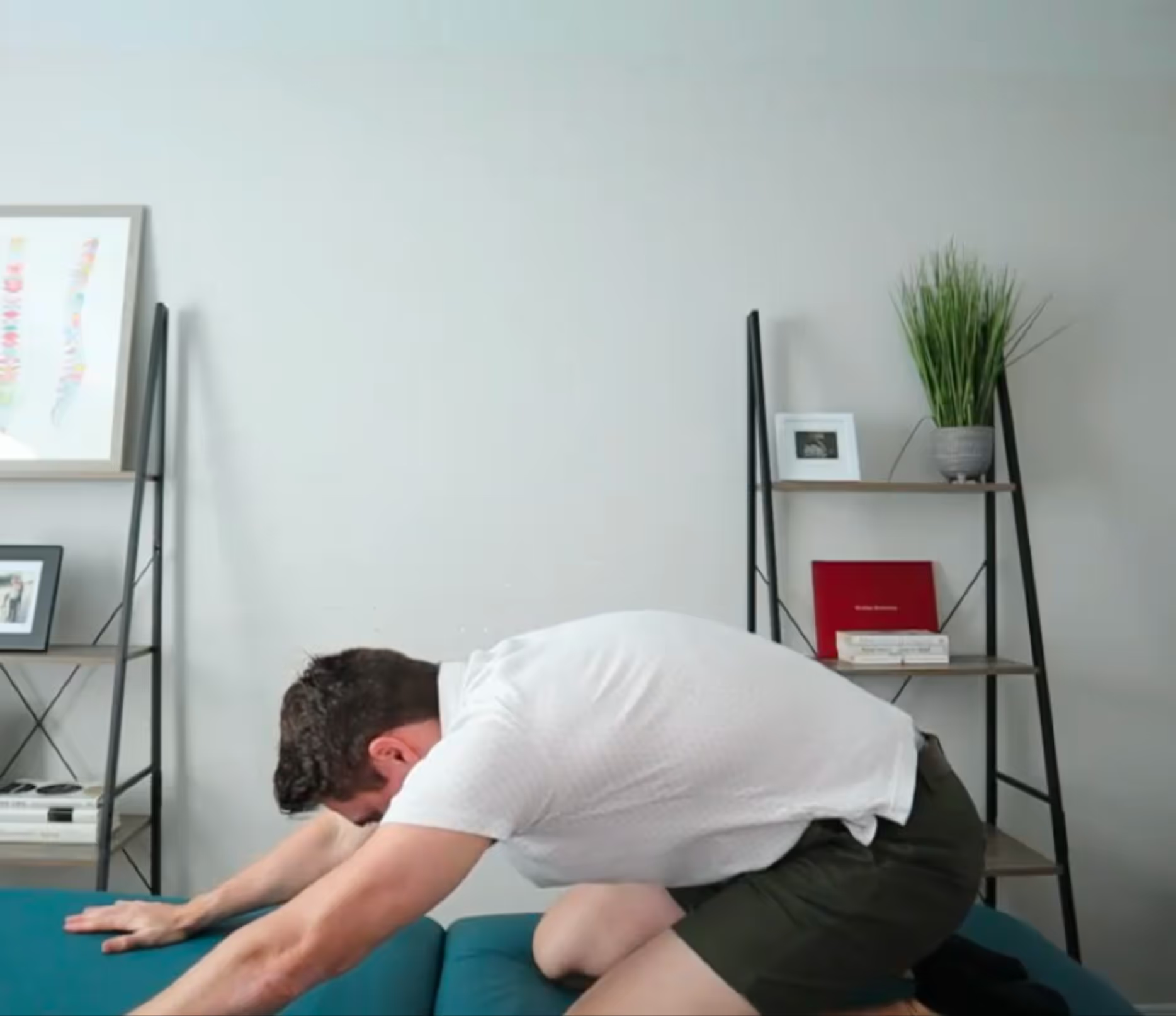
Okay this is the go to lower back stretch that most love. You will be on your hands and knees again.
1. You will have your hands under your shoulders and knees under your hips.
2. You will tuck your pelvis or contract your abs. As you do this you will feel that you are tucking your hips underneath you.
3. Hold that tuck and sit down towards your heels. You will feel this in your lower back.
I like to start with 5 for a 15 sec hold.
For some, they don’t have enough hip range of motion or have knee stiffness that stops them from doing this. If that is you, just stop where you feel a good stretch, no further. Every body is different and that is okay.
References:
What needs to be done to make sure stretching doesn't make your back pain worse.
- Listen to your body
- Don't hold, pulse
When you listen to your body, you let your body guide the moment. What I tell my clients is that stretching should always make you feel better. It may hurt so good or feel stiff but that's a part of the process. If you have residual soreness for longer than a few minutes you did too much too fast.
The other caveat that I tell my patients is that stretching is often better when you pulse and not hold. The pulsing allows you to gain more range of motion and flexibility without the discomfort or your body guarding.
You an apply the principles to the back stretches below.
Is Stretching Your Back Making Your Pain Worse? Learn When Stretches Make the Spine's Condition Worse
The Risks of Aggravating Your Low Back Condition
Is stretching my lower back bad?
The short answer is no! Stretching not only lengthens your muscle but it also moves your joints through ranges they are built to move through. However, there are two main reasons why your back may hurt after stretching.
- You went too far too fast. The key with stretching your lower back is to listen to your body. When you stretch, you want go right up to the point of feeling the stretch but no further. More isn’t better. When I work with my patients on stretching, I always let them know that they are in charge. I can only tell them where they may feel the stretch, but not how intense the stretch in their back muscles should feel. I have never had a stretch make someone worse for that reason. We need to use what you feel as a guide as we learn how to move your body. Stretching and mobility exercises are important. What is great is that they usually only take a couple minutes to complete. It feels so good to stretch your lower back, but learning how is important. Check out a past video on stretching!
- The intent of the stretch doesn’t match what is actually happening. This is important! There is a lot of information out there (and it can be easy to have the best intentions) but the execution may be off. I always recommend learning how to move your body correctly. You can do this by consulting a professional such as a physical therapist, personal trainer, or chiropractor. I recommend someone who has spent time moving their body to learn from. They may even be able to come to your home!
What’s the best way to stretch your lower back?
How do you safely stretch your tight or stiff lower back? Here are my top 3 safe stretches for lower back pain and stiffness.
- Standing Prayer Stretch
- Quadruped Rotation
- Prayer stretch with posterior pelvic tilt
Disclaimer. You need to make sure you are okay to exercise and move your body.
Standing Prayer Stretch

This is probably my favorite most effective upper back and lower back stretch since it can be done anywhere and you don’t have to get on the ground! It works into the stiffness but allows you to control how much you feel it! It stretches so much in your back.
1. Stand at your counter or next to something tall and sturdy.
2. Put your arms on the stable surface and step backwards allowing you to bend over with your head between your arms. Try to poke your butt out.
3. Slightly bend your knees and sink you chest and head between your arms.
4. You should feel this in your upper back and lower back. You may also feel this stretch in the back of your legs. Really everything is fair game if you are really stiff! Personally I feel it in my upper back, side of my arms, and sometimes in the back of my legs when I do this stretch.
A good place to start would be 5 for a 10-15 second hold.
Quadruped Rotation with Thread the Needle


This is done on your hands and knees. If you can’t put pressure on your knees try a pillow under them. If that still doesn’t work then don’t worry about it. Don’t force your body to do something.
1. On your hands and knees with your knees under your hips and hands under your shoulders. Then lift one arm and rotate towards the sky turning your head while you are rotating. You will feel this in your upper back and you will feel that your stabilizing arm is working.
2. Further isn’t better. Just work into your back stiffness and then come back down. As you come back down make sure you are controlled.
3. On your way down reach underneath the other arm towards the other direction. You should feel this in your upper back. Don’t let the stabilizing arm bend as you do this.
Tip: When you get to the top, breath out. You will feel more of the stretch.
Try 5 or so on each side
Prayer Stretch or Child’s Pose with Posterior Pelvic Tilt


Okay this is the go to lower back stretch that most love. You will be on your hands and knees again.
1. You will have your hands under your shoulders and knees under your hips.
2. You will tuck your pelvis or contract your abs. As you do this you will feel that you are tucking your hips underneath you.
3. Hold that tuck and sit down towards your heels. You will feel this in your lower back.
I like to start with 5 for a 15 sec hold.
For some, they don’t have enough hip range of motion or have knee stiffness that stops them from doing this. If that is you, just stop where you feel a good stretch, no further. Every body is different and that is okay.
References:




%20Blog%20thumbnails%204.avif)
